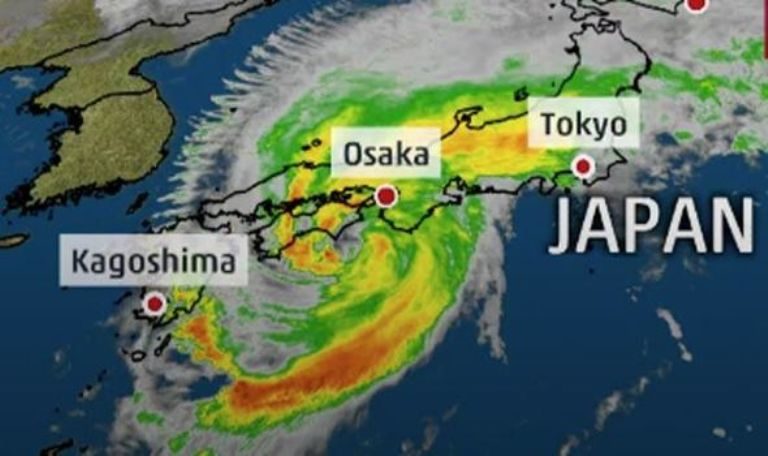
© THE WEATHER CHANNELTyphoon Trami: The storm has blasted across Japan
Tokyo woke up to unseasonal heat and bright cloudless skies on Monday (Oct 1), hours after the ferocious Typhoon Trami caused widespread power outages,
cancelled flights and shut down train services as it churned towards the Pacific Ocean.
Commuters in central Tokyo experienced massive transport snarls during the morning rush hour - with many unable to get to work on time - as rail operators delayed the start of train services to clear fallen trees and other debris.
One of the services was the Keio Line, after a train hit a collapsed wall in Setagaya ward at about 4.45am, halting services for over four hours. No one was injured.
Across the country, the season's 24th typhoon
left at least four people dead, one missing and more than 200 injured, according to a tally by public broadcaster NHK as at 9pm (8pm in Singapore).
The storm
first slammed into the south-western Okinawa chain of islands on Saturday, before moving north-east and making landfall in Wakayama, south of Osaka, on Sunday. It then traversed north-east across the main island of Honshu.
At its peak, the typhoon packed gusts of 216kmh, the Japan Meteorological Agency said. Though it gradually lost strength after making landfall, the western Tokyo suburb of Hachioji still recorded winds of up to 164kmh.
It reached the Pacific Ocean off the coast of Hokkaido on Monday morning, but a resultant pressure system that brought in warm air from the south led to unseasonal summer-like temperatures.
October heat records were reset at 51 weather points, mainly in eastern Japan.The mercury hit a new peak of 34.3 deg C in Sano city in Tochigi and 33.8 deg C in Kumagaya city in Saitama, both in the Greater Tokyo region. Central Tokyo sweltered in 32.3 deg C heat, the second-highest reading in history for October.
On Sunday evening, evacuation warnings had been issued to more than 3.8 million people in 23 prefectures, the Fire and Disaster Management Agency said.
Heavy rains caused landslides - killing a 50-year-old truck driver in Tottori in western Japan - and surging waters overwhelmed riverbanks, killing a man in his 40s in Yamanashi, west of Tokyo, a 79-year-old man in Kyoto, and a 46-year-old man from Shiga prefecture east of Kyoto.
The missing person is a 67-year-old woman from Miyazaki prefecture on south-western Kyushu island, who is also believed to have been washed away by floodwaters.
The storm also caused a widespread shutdown of train services, disrupted air travel, and cut power to more than one million homes.
East Japan Railway, more commonly known as JR East, cancelled all train services in the Tokyo metropolitan area from 8pm on Sunday evening. This affected a total of 1,239 services which, on an average Sunday evening, would see more than 460,000 commuters.
"Because of the expected strong typhoon and the likelihood it would affect the entire metropolitan area at night, we took this step in consideration of the safety of our passengers," a spokesman said.
Shinkansen bullet train services between Tokyo and Shin-Osaka stations - the world's busiest train route - were also halted on Sunday.
More than 1,000 domestic and international flights were cancelled at the Kansai International Airport, which shut from 11am on Sunday to 6am on Monday, affecting over 100,000 passengers.
More than 280 flights operated by All Nippon Airways and Japan Airlines remained cancelled yesterday, mainly for routes serving northeast Japan.
Since June, Japan has endured a series of natural disasters that have killed more than 400 people.Major earthquakes shook Osaka in June and Hokkaido last month. In July, western Japan was inundated by 72 hours of historic rainfall that caused widespread landslides and floods.Heat records were broken in eastern Japan this summer, while last month, the Kansai region bore the brunt of Typhoon Jebi, the strongest typhoon to hit Japan in 25 years.
Reader Comments
to our Newsletter